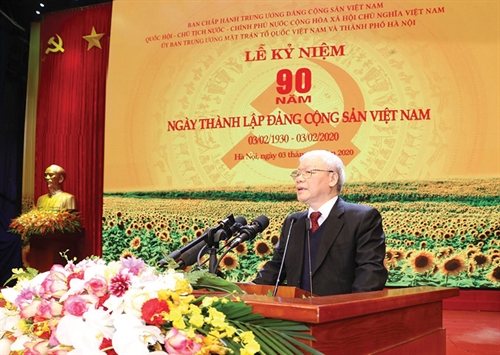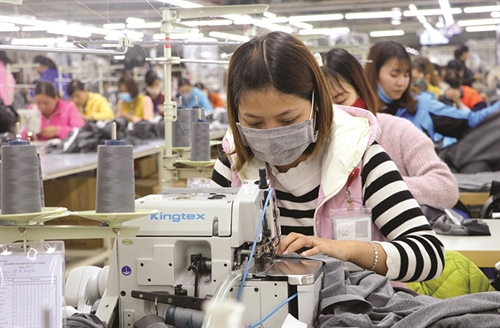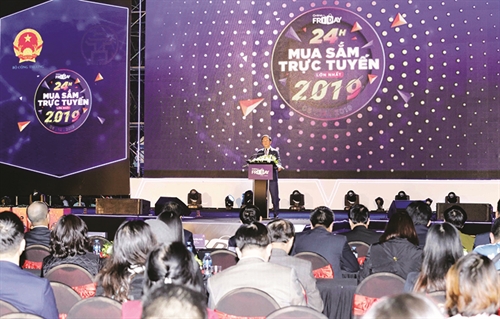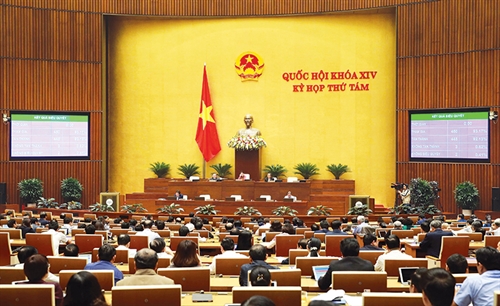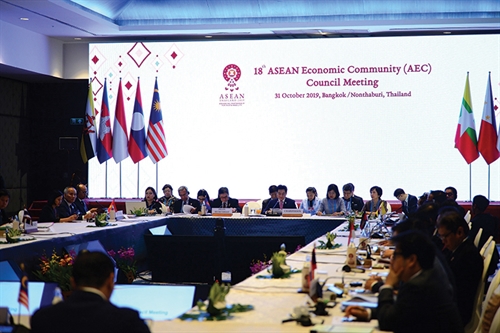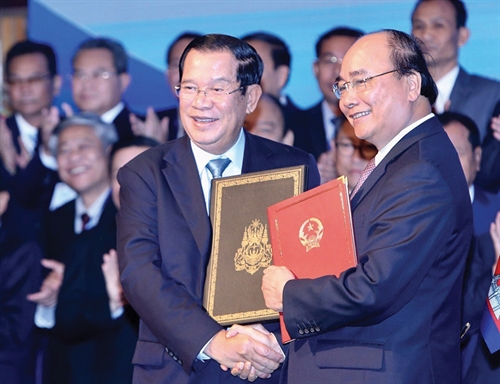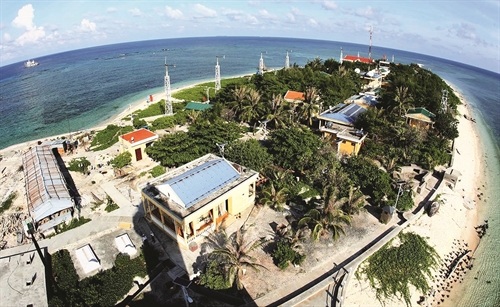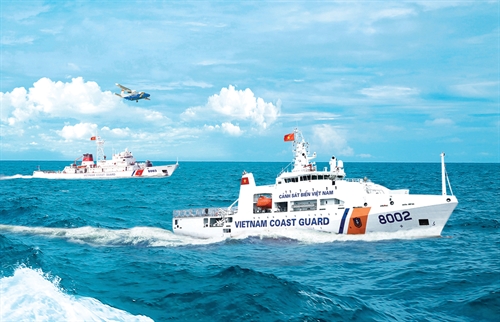Nguyen Hong Thao
Associate Professor, Diplomacy Academy of Vietnam
Facing the COVID-19 pandemic, the claimant States in the South China Sea (also known as the East Sea) confront with another virus on the maritime front. It’s the virus on expansion of claim and intimidation. After having successfully controlled the coronavirus, China has undertaken a series of actions to establish its administration over the whole East Sea. The actions are various from fisheries to maritime surveys, diplomatic notes, establishing new districts, naming shoals to coercion. Chinese victims are not limited to only one country but also Vietnam, the Philippines, Malaysia and even Indonesia.
Fishing incident
One fishing incident occurred near the Paracel Islands on April 2, 2020, between Vietnamese fishing boats and Chinese Coast Guard (CCG) vessels, where each side claiming their ship had been rammed by the other.[1] Vietnam lodged protests condemning the incident, claiming that the CCG ship rammed and sank a Vietnamese fishing boat.[2] The incident marked the second time in less from the beginning of the current year. The US State Department and Department of Defense voiced their great concern about this incident and called on the China “to remain focused on supporting international efforts to combat the global pandemic, and to stop exploiting the distraction or vulnerability of other states to expand its unlawful claims in the East Sea.”[3] The Philippines expressed solidarity with Vietnam in stating that ‘in the face of it (COVID-19), neither fish nor fictional historical claims are worth the fuse that’s lit by such incidents.”[4] In opposition, China strongly rebuffed the US statements and urged the US to stop meddling in the East Sea.[5] The problem is that the Paracels claimed by Vietnam was invaded and illegally occupied by China in 1974. The area in vicinity of the Paracels is the traditional fishing ground of both Vietnamese and Chinese fishermen. The threat or use of force in regard of civil persons and properties was condemned by international law[6].
Diplomatic note war on the extended continental shelf of 2019-2020
The 2016 arbitration verdict on the East Sea impacted the attitudes of the claimant States. On December 12, 2019, Malaysia’s diplomatic note[7] extended the outer limit of its continental shelf based on the assumption that high tide features in the Paracel and Spratly Islands are only entitled to 12 nm territorial seas and that the nine-dash line has no legal merit. Given that the verdict favored the Philippines, and even though it was not a party to the lawsuit, Malaysia saw an opportunity to benefit from the ruling, as such stance extended Malaysia’s continental shelf almost two times of its 1979 claim. It opened the second diplomatic note war on the extended continental shelf in the East Sea. The first was initiated by Malaysia-Vietnam Joint Submission[8] and Vietnam’s Partial Submission[9] on May 6 and 7, 2009, respectively.
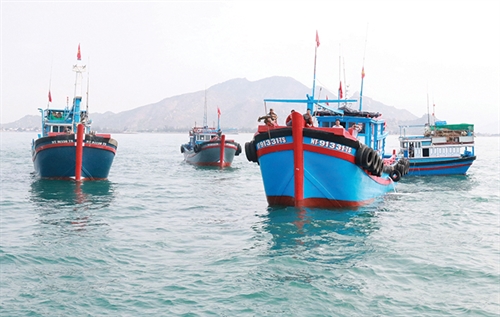 |
| Offshore fishing fleet of Ninh Thuan province’s fishermen__Photo: Nguyen Thanh/VNA |
In 2020, the Philippines added greater clarity to its position by the two notes verbales[10] on March 6. Whilst the 2009 note emphasized that the Malaysia-Vietnam joint submission overlaps with the continental shelf of the Philippines and makes “controversy arising from the territorial claims on some islands in the area including North Borneo”, the diplomatic note confirmed the conclusions of the 2016 Tribunal ruling that “none of the high tide features in the Spratly Islands generates entitlements to an EEZ or continental shelf.” The Philippines also expressed its consistent rejection of the Chinese nine-dash line claim, historic rights and the notion of “adjacent waters as well as the seabed and subsoil underground.” The 2020 diplomatic note shows that the Philippines has not given up the arbitration ruling, and it continues to bring it up when it sees fit in dealing with neighboring countries.
Vietnam’s position is reflected in the statement of the Ministry of Foreign Affairs (MOFA) spokesperson on January 9, 2020, and its notes verbales to the United Nations on March 30 and April 10, 2020, in response to the notes of China, Malaysia and Philippines, respectively. They clarify in a systematic manner Vietnam’s position on maritime entitlements in the East Sea under the United Nations Convention on the Law of the Sea (UNCLOS) in general and after the arbitration award specifically. It is affirmed that the UNCLOS provides the sole legal basis for defining, in a comprehensive and exhaustive manner, the scope of their respective maritime entitlements in the East Sea, the Vietnamese name for the East Sea, implicitly rejecting the nine-dash line claim and historical rights of China in the East Sea. Vietnam contends that the “maritime entitlement of each high-tide feature in the Hoang Sa (Paracel) Islands and the Truong Sa (Spratly) Islands shall be determined in accordance with Article 121(3) of the UNCLOS.” In its joint submission with Malaysia, Vietnam extended the continental shelf beyond 200 nm from the mainland with the assumption that the features of the Spratly Islands did not have their own continental shelves. The summary of these statements and the Vietnam-Malaysia joint submission of 2009 shows Vietnam’s support for the conclusions of the verdict, specifically that “none of the high-tide features in the Spratly Islands are capable of sustaining human habitation or an economic life of their own within the meaning of those terms in Article 121(3) of the Convention.” The legal status of the Paracel Islands will be determined in accordance with Article 121 (3) of the UNCLOS and Article 20 of the Law of the Sea of Vietnam in 2012.
The note on April 10, 2020, and the statement of January 9, 2020, reserve the sovereign rights and jurisdictions of Vietnam over the continental shelf extending beyond 200 nm in the East Sea. Vietnam’s 2020 notes continue to oppose the application of archipelagic baselines to the Paracel and Spratly Islands, explicitly refuting the Chinese straight baseline system around the Paracel Islands announced in 1996 and pre-empting same practice being used for the Spratlys. Vietnam considers that low-tide elevations or submerged features are not subject to appropriation and do not, in and of themselves, generate entitlements to any maritime zones. Maritime claims in the East Sea that exceed the limits provided in the UNCLOS, including historic rights, are unlawful. Vietnam also reiterates its consistent position that it has ample historical evidence and legal basis to affirm its sovereignty over the Hoang Sa and Truong Sa Islands in accordance with international law.
Unlike those of Malaysia, the Philippines and Vietnam, China reserves its claim on the whole of the East Sea in a series of notes verbales sent to the United Nations respectively on December 12, 2019,[11] and March 23[12] and April 17, 2020.[13] China continues to keep the validity of the nine-dash line under the new brand name of Nanhai Zhudao, which consists of Dongsha Quindao, Xisha Quindao, Zhongsha Quindao and Nansha Quindao. By claiming maritime zones based on the Nanhai Zhudao, China expected to legitimize its claims using UNCLOS terminologies. However, this concept is as ambiguous as the nine-dash line. By using the singular instead of the plural in the statement that “China has EEZ and continental shelf based on Nanhai Zhudao”, China might imply that even Nanhai Zhudao can be considered a single unit and thereby the archipelagic baseline could be drawn for Nanhai Zhudao by joining the outermost points of their respective outermost features, and not just for each archipelago as already did in the Paracels.
However, in the notes addressing to the Philippines and Vietnam, China repeated its claims sovereignty over the Paracels and Spratlys, and their adjacent waters. China claims sovereign rights and jurisdiction over the relevant waters as well as seabed and subsoil thereof. It can also be interpreted that China also reserves the possibility to draw archipelagic baselines for each archipelago in Nanhai Zhudao. Either way, China benefits by rejecting the arbitration ruling as well as establishing new claims. The Chinese note verbale on March 23, 2020, continues the position of three no(s), namely: do not participate; do not accept the jurisdiction of the Tribunal; and do not recognize the arbitration award, given that China “never accepts any claim or action based on the awards.” China continues to put efforts in preventing other countries from using the verdict to support their positions whilst at the same time persisting to claim historic rights in the East Sea. It also argues that those rights are above the rights provided by the UNCLOS, contrary to what the arbitration has ruled.
The second legal war splits the claimant States in the East Sea into two sides: one chooses the UNCLOS and implements the expansion of the continental shelf and the other, only China that wants to put the East Sea completely under its sovereignty.
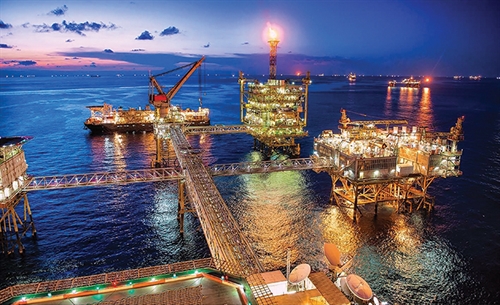 |
| The night view of the Bach Ho (White Tiger) oilfield__Photo: Tran Minh Son/Vietsovpetro/VNA |
Actions on the ground
Since April 15, 2020, China has stepped up its vigorous deployments to create a new status quo over the whole East Sea.
Its note on April 17, 2020, requires Vietnam to “withdraw all the crews and facilities from the islands and reefs it has invaded and illegally occupied.” China, the only one state used the force in 1974 and 1988, has accused Vietnam of violating the purpose and principles of the Charter of the United Nations even though this country was victims of the former’s use of force in 1974 and 1988. It can be regarded as signals that China may increase coercions or resort to force on the ground against other claimant countries. The same intimidation was illustrated in the Statement of China’s spokesperson on February 22 before the bloody skirmish on March 14, 1988.
Making the matter worse, on April 18, 2020, China announced the establishment of Xisha District and Nansha District. The former has the authority based on the Woody Island and administering the Paracels and “Zhongsha” (include Macclesfield Bank, the main part of Zhongsha and the Scarborough Shoal) features and waters. The latter has its government based on the Fiery Cross Reef and administering the Spratly features and waters. Without regarding the sovereignty dispute, this action goes against the Tribunal ruling that all features in the Spratlys are not capable of generating maritime zones beyond 12 nm. Macclesfield Bank is still submerged. The establishment of the new districts will open a way to declare their administrative limits in the form of possible archipelagic straight baseline for Nanhai Zhudao. By that way, China can block the supply routes of other States to their garrisons. In connection with the campaign, the coded “Blue Sea 2020” undertaken from April 1 to November 30, 2020 allows the CCG and other Chinese forces to condemn “violations” of Chinese laws in eight fields including marine and coastal project construction, offshore oil exploration and exploitation, marine dumping and sea sand mining and transportation.[14] As a consequence, all freedom activities will be subject to permission.
An example of undertaking this policy is the Hai Yang Di Zhi 8 survey ship, accompanied by China Coast Guard (CCG) ships, within 200 nautical miles of Malaysia’s mainland. Under the UNCLOS, a research vessel would need to request permission of the coastal state before operating within its 200 nm EEZ. This violation is similar to the one in Vietnam’s EEZ and continental shelf last year.[15] The intrusion of Hai Yang Di Zhi 8 in the Vietnamese continental shelf just 60-80 nautical miles from the coast made the bilateral relation more strained.[16] China has increasingly taken more actions to warn Malaysia and Vietnam not to conduct oil and gas exploration on their own continental shelves but sharing with the Chinese companies.
The result of its illegal survey also constituted a premise for the naming of 80 shoals[17], 12 in the Paracels, 13 in the Spratlys and 55 in the deep of the EEZ and continental shelf of Vietnam, an act seriously violating coastal sovereign rights and jurisdiction. In its turn, China stated that move was taken in the face of increasing opposition from Vietnam.
Perspectives
China cunningly takes advantage of the COVID-19 outbreak to assert its claims and deploy intimidation actions in the East Sea. Through those actions, China wants to establish a new status quo before finalizing the COC negotiations. Foreign participation in oil and gas exploration in the East Sea would be excluded. Other States must accept the joint development with Chinese petroleum companies on their own EEZs and continental shelves determined in accordance with the UNCLOS. The fishing activities would be reorganized under the Chinese instruction. This move threats the peace and stability in the East Sea and deepens the lack of trust between parties to the COC negotiation.
Disputes in the East Sea will depend heavily on the legal battle being intensified rather than using and threatening to use force. Countries in and outside the region must condemn any violations of international law. The freedom of navigation operations (FONOP) conducted by US navy and its Australian ally have not been enough. ASEAN must be united to issue a firm and collective protest to those intimidations and harassments. As a country in the East Sea and member of ASEAN, Vietnam sincerely wishes that countries’ lawful and legitimate rights and interests as enshrined under the UNCLOS 1982 and international laws are respected and that relevant parties are responsible for complying with international laws and the 1982 UNCLOS as well as show their commitments to the development of the friendly relations between countries and to the peace, stability, cooperation in the East Sea, the region and the world.[18]-
https://www.cnbc.com/2020/04/04/vietnam-protests-beijings-sinking-of-south-china-sea-boat.html
https://thediplomat.com/2020/04/south-china-sea-us-state-department-criticizes-china-for-reported-ramming-sinking-of-vietnamese-fishing-boat/
Philippines Backs Vietnam After China Sinks Fishing Boat, The New York Times, April 8, 2020
https://www.nytimes.com/aponline/2020/04/08/world/asia/ap-as-philippines-sunken-vietnamese-boat.html
Joint submission of Malaysia and the Socialist Republic of Viet Nam dated May 6, 2009, available at the Commission on the Limits of the Continental Shelf (CLCS) available at https://www.un.org/Depts/los/clcs_new/submissions_files/mysvnm33_09/mys_vnm2009excutivesummary.pdf.
Submission of the Socialist Republic of Viet Nam dated 7 May 2009 available at the CLCS Website https://www.un.org/Depts/los/clcs_new/submissions_files/submission_vnm_37_2009.htm.
Note verbale No. 000191 of the Permanent Mission of the Philippines to the United Nations, March 6, 2020, available at https://www.un.org/Depts/los/clcs_new/submissions_files/mys_12_12_2019/2020_03_06_PHL_NV_UN_001.pdf
